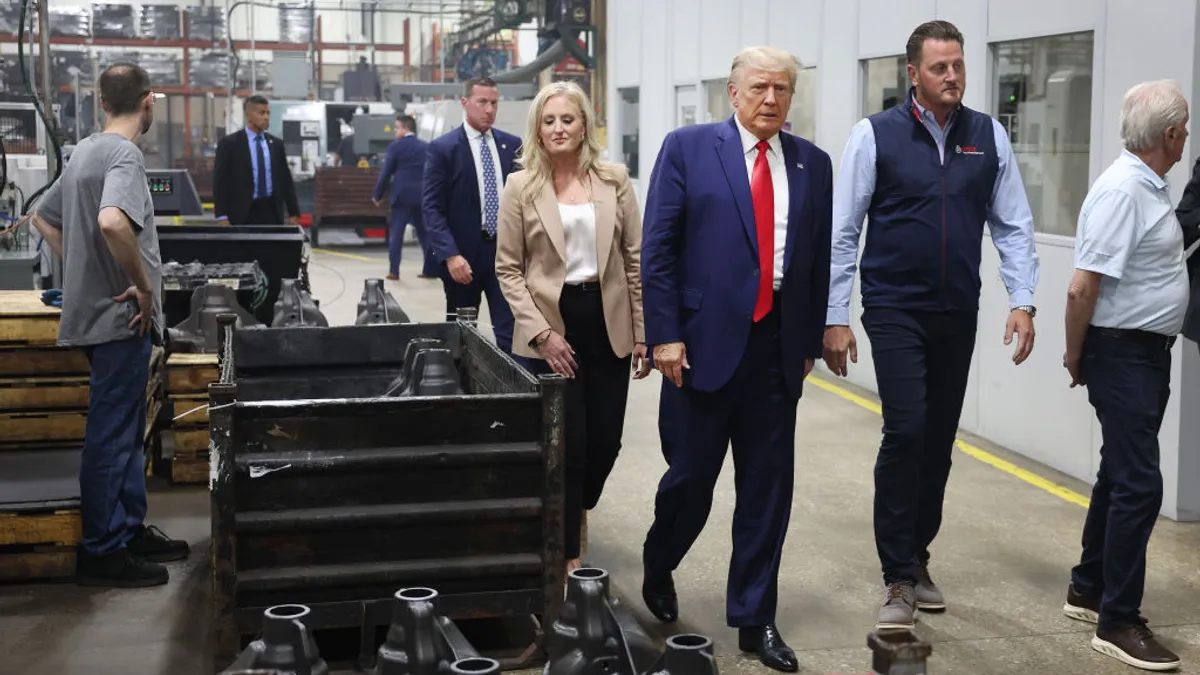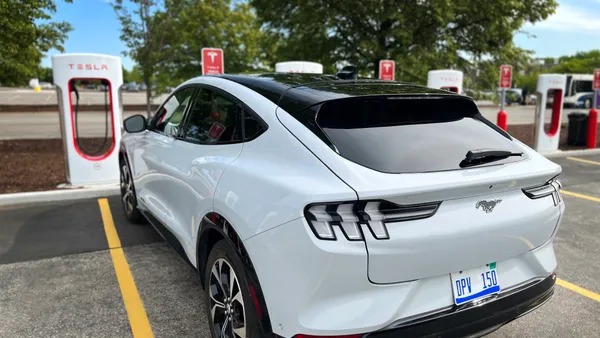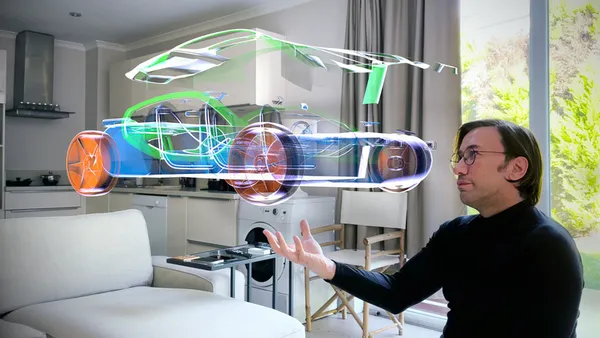President Donald Trump on Friday added some electronics to the list of products exempt from reciprocal tariffs.
Imported smartphones, flat panel display modules and a broader list of electronic integrated circuits will no longer be subject to the 10% baseline reciprocal tariff worldwide, as a result of a presidential memorandum. The president included those products in a list of 20 harmonized tariff system codes that he said would qualify as “semiconductors.”
In previous orders, the president had expressly exempt semiconductors — along with pharmaceuticals, energy, energy products, lumber articles, copper and some critical minerals — from reciprocal tariff treatment. However, the exact list of products that fit into those categories was left open to interpretation. Friday’s memorandum ensures officials’ interpretations of semiconductors now include an expanded list of products, including some electronics.
The new exemptions are retroactively effective April 5, and shippers may request a refund for duties paid on newly-exempted products, according to a notice from U.S. Customs and Border Protection.
“The electronics industry depends on predictable trade policies to foster innovation, ensure supply chain resilience, and maintain the competitiveness of domestic manufacturing,” John Mitchell, president and CEO of global electronics industry association IPC, said in a statement. “These tariff exclusions will help avoid supply disruptions, control costs, and support continued investment in advanced technologies in the United States.”
Which products qualify as "semiconductors" for tariff exemptions?
The addition of key electronics to the exemptions list caps a week in which the Trump administration scaled back some of its tariff actions. While country-specific tariff rates were due to begin mid-week, the president ultimately paused implementation of those in favor of a global 10% baseline tariff.
However, the Trump administration doubled down in other areas. On Tuesday, the president said “major tariffs” on pharmaceutical products — which are currently exempt from reciprocal tariffs — were still part of the plan.
Similarly, federal officials said Sunday the electronics tariff exemption is only temporary, as the Trump administration prepares to establish sector-specific tariffs on the goods. Trump has previously threatened tariffs on semiconductors, though details of those remain unclear.
"Semiconductors and pharmaceuticals will have a tariff model in order to encourage them to reshore, to be built in America," Secretary of Commerce Howard Lutnick told ABC News' "This Week" on Sunday. Lutnick added the sector-specific tariffs would come in the next month or two.
Also on Sunday, Trump clarified products that qualify for reciprocal tariff exemptions must still pay other national emergency-related tariffs, such as a 20% duty on goods from China.
"There was no Tariff "exception" announced on Friday," Trump said on Truth Social. "These products are subject to the existing 20% Fentanyl Tariffs, and they are just moving to a different Tariff "bucket.""
Earlier in the week, the U.S. escalated its trade war with China by hiking the country’s reciprocal tariff rate to 125% despite lowering it for most other countries. The increase means many other imports from China will have to pay a minimum of 145% in extra tariffs, as the 125% stacks on top of a combined 20% "fentanyl" tariff implemented earlier in the year.
Notably, China is a top source of smartphones and laptops for the U.S., per an analysis from Jason Miller, a professor of supply chain management at Michigan State University.













